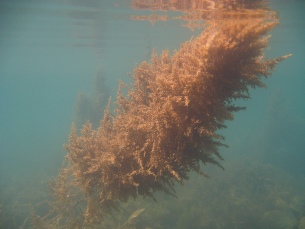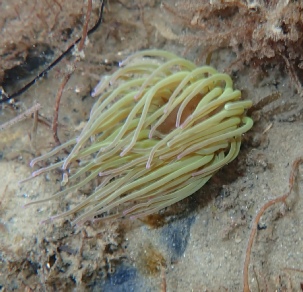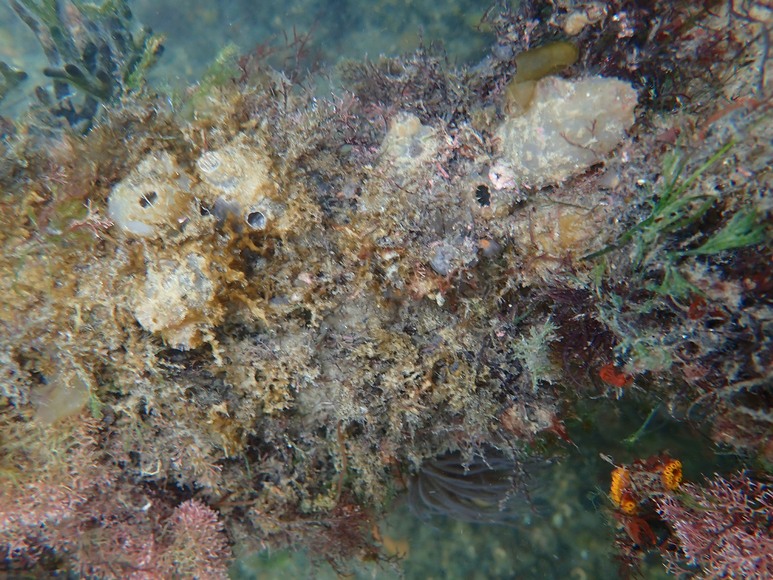Chesil Beach and the Fleet Lagoon
18 miles and 180 billion pebbles
Ferrybridge - Underwater

BEWARE!
There are strong currents along the main channel and under the bridge. Walking out on the sand flats from the Visitors Centre as you approach the channel the sand gets very soft and there is then a steep drop-off into deep water in the main channel.
Also be aware that wireweed, also known as Japanese seaweed, is present in the Fleet. Most years it is not a problem but some years the growth is more vigorous and can cause problems.
Snorkelling in the Fleet
The Ferrybridge area has a varied underwater environment. Whilst it is mainly sandflats, the area to the north of the main channel can be interesting for snorkelling and has weak currents except at spring high tide. An area along the Chesil shoreline can provide superb snorkelling, but be aware of strong currents and potentially dangerous underwater obstructions.
The Fleet supports many unusual species because of its unique features. Many species found here are at the northern limit of their range. It is impossible to list all of the species here so only a few of the commoner species are presented.
The shore crab is very common in the main channel of the Fleet but they are less common on the sandflats. In the deeper area off the north shore of the Fleet hermit crabs are often seen.
A number of species of prawn are found along the shoreline of the Fleet in amongst the algae and the underwater obstructions. Species include Palaemon elegans, Palaemon adspersus and Anthanas nitescens. It is believed that snapping shrimp, Alpheus macrocheles, are also to be found in the Fleet and the snorkeller can usually hear the loud clicks that they make.
Sea squirts are very common below the lower tide mark and in the deeper channel.They will grow on any fixed object on the seabed.
There is a wide variety of algae (seaweed) in the Fleet. The commonest is bladder wrack, but also found during the summer is sea lettuce and bootlace weed. In late winter there are often a number of oyster thieves,Colpomenia peregrina, washed up on the Fleet shoreline.
There are two common sea anemone species: the snakelocks anemone and the dahlia anemone. The dahlia anemone is found on the sides of the main channel while the snakelocks anemone is very common in the shallows along the Chesil shoreline.
There are many species of marine worm but you are only likely to encounter two species: the peacock worm and the lugworm. The peacock worm is a fan worm that can often be found in the shallows along the Chesil shoreline or on the underside of the floating pontoon on the north shore. The lugworm is the species dug by anglers on the sandflats and manifests its presence with surface casts.
The Fleet is a nursery area for bass and also has a large population of grey mullet. Other species common in the area are common/sand goby, corkwing wrasse, ballan wrasse, two-spot goby, sand smelt and common eel.
The commonest shellfish is the cockle and this is found in the sandflats along the north shore and off Hamm Beach. Other shellfish include carpet shells, razorfish, barnacles and the black mussel. Also fairly common are winkles and Pacific oysters, which have escaped from the oyster farm..



Colourful array of sea life on a wreck on the bed of the Fleet.



